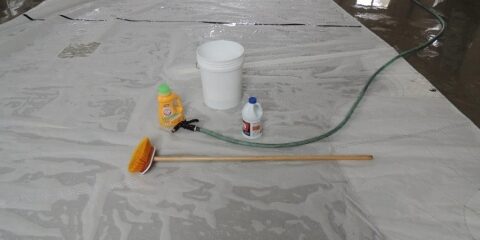Maintaining Canvas Sails Running Rigging
In the northeast at least it is that melancholy time of year when we are putting boats away, both power and sail. By the way this maintenance tip applies to both sail and power, just that power boaters typically have a lot less canvas and running rigging.
I see far too many owners pulling off sails and canvas and just putting them away in the garage, basement or wherever. All of that stuff is loaded with salt! I have had many friends tell me that they sail conservatively and haven’t gotten any spray etc. on their sails, and while that may be true, think about leaving a car parked 150 yards off the water at the beach on a windy day. You won’t have gotten one drop of water on your car but look at the windows and they are covered with salt! The same is just as true for your sails, dodger, bimini etc. (not to mention there is a bunch of dirt in there too!) That salt (and dirt) harms your fabric products and line in two ways: 1. it is an abrasive and, while minutely, is chaffing at the threads in your canvas and lines all the time. 2. Salt absorbs moisture and will hold it causing mildew and odor.
If you re so inclined simply dropping them off with the sail or canvas maker for washing and inspection is fine but if you are a thrifty New Englander like me you may be more inclined to do it yourself. Here is how to go about it.
While the photos I have in the article are all done in our showroom at East Coast Yacht Sales I actually find it faster and easier to do this at a yacht club dock in a light breeze. As soon as I get a sail washed I quickly hoist it on the boat and in a 3-7 knot breeze the sail gently flaps and will dry out in just ten or twelve minutes! One thing you don’t want to do is to spread a sail out on your lawn. New synthetic fabrics don’t breath the way that even earlier Dacron did and the side facing the grass inevitably ends up like the inside of a terrarium!
Canvas and sails can be washed with a mild solution of any fabric detergent, and a very minor amount of chlorine bleach. I typically use a 5 gallon pail with about 2.5 gallons of water and 8-10 oz. of detergent and 4-5 oz. of bleach. On colored canvas I only add 2-3 oz. of bleach. Scrubbing should be done only with a soft bristle brush and then the canvas or sails thoroughly rinsed with fresh water. Last but not least, while you are doing all this inspect your sails and canvas for any repairs that are warranted. (also treat your canvas covers, bimini etc. with Scothch guard or other water proofing treatment once dry)
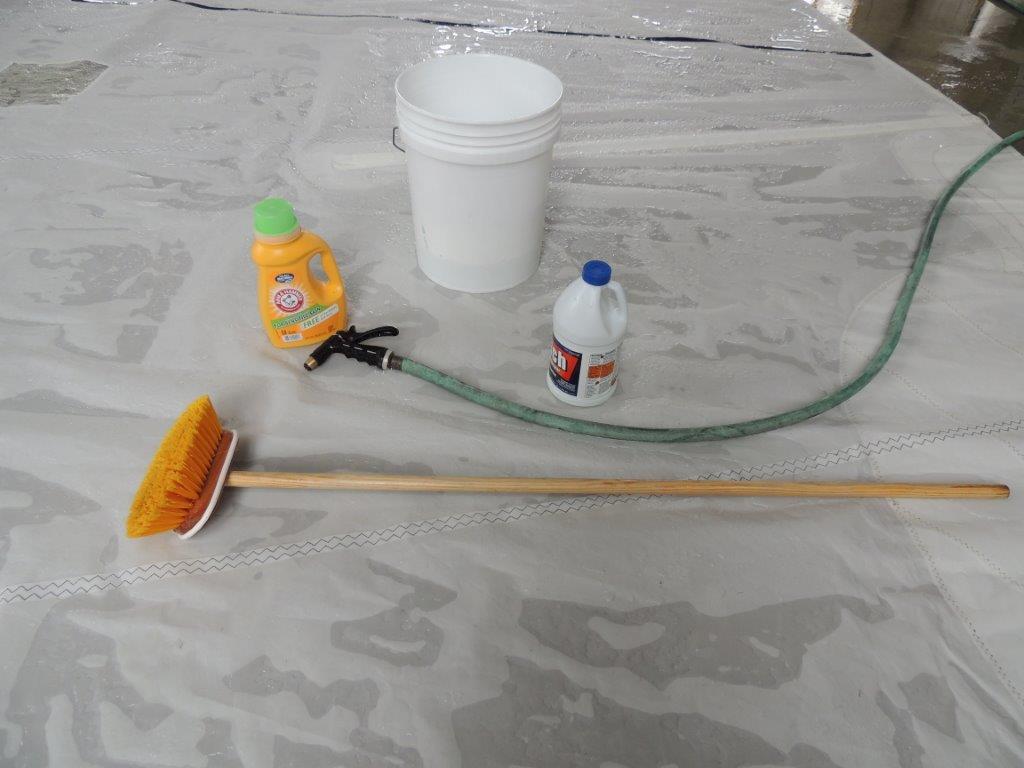
I almost never see anyone giving their running rigging, dock lines, fender covers etc. the same treatment yet when they are in service they get treated more harshly than the canvas does. My typical treatment of running rigging is to coil it all into a large tub with the same approximate amount of detergent but a higher concentration of bleach and then work the pile of line by hand a bit. Take a look at the photo and you get the idea of just how much dirt, not to mention salt gets worked out of it. Again through rinsing with fresh water. My last treatment for running rigging, dock lines etc., is to dump it back into the tub with water and a pint of fabric softener and allow it to soak in for several hours.
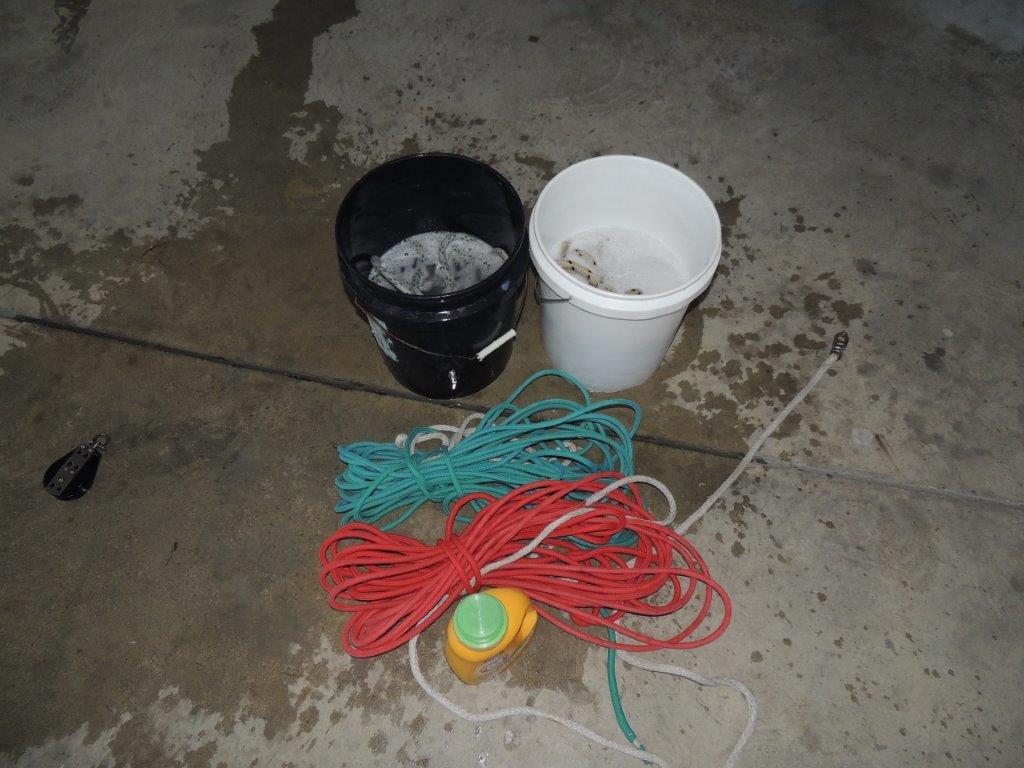
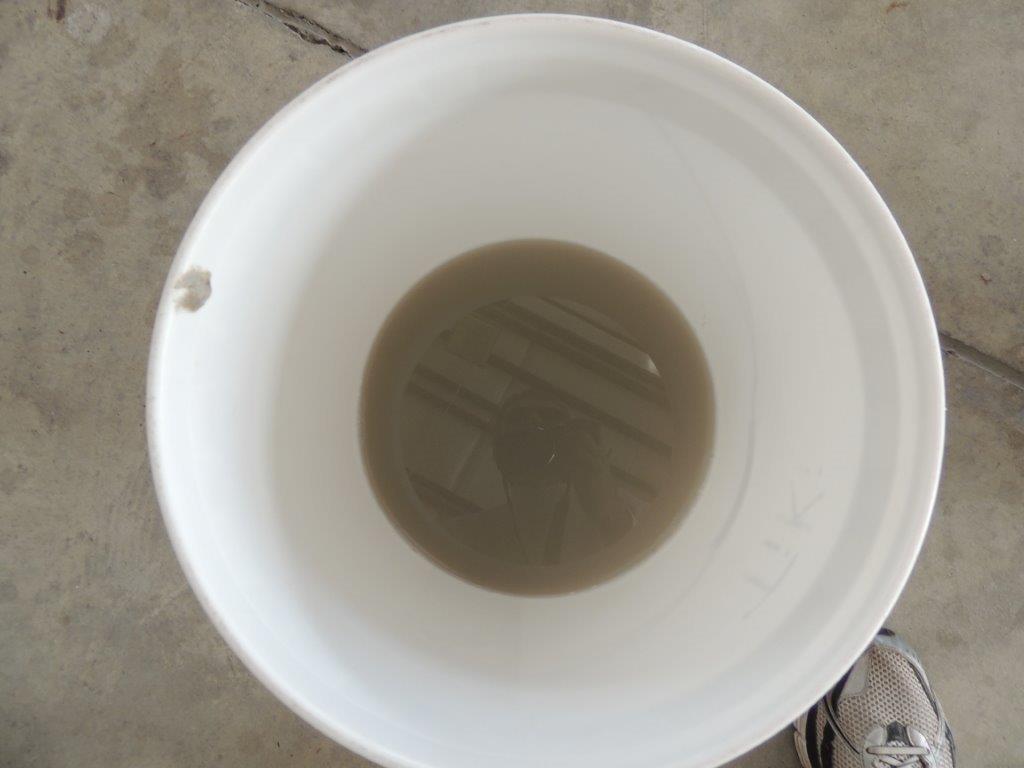
Fabric softener has a fair amount of lanolin in it and it is amazing just how soft and pliable it keeps the lines.
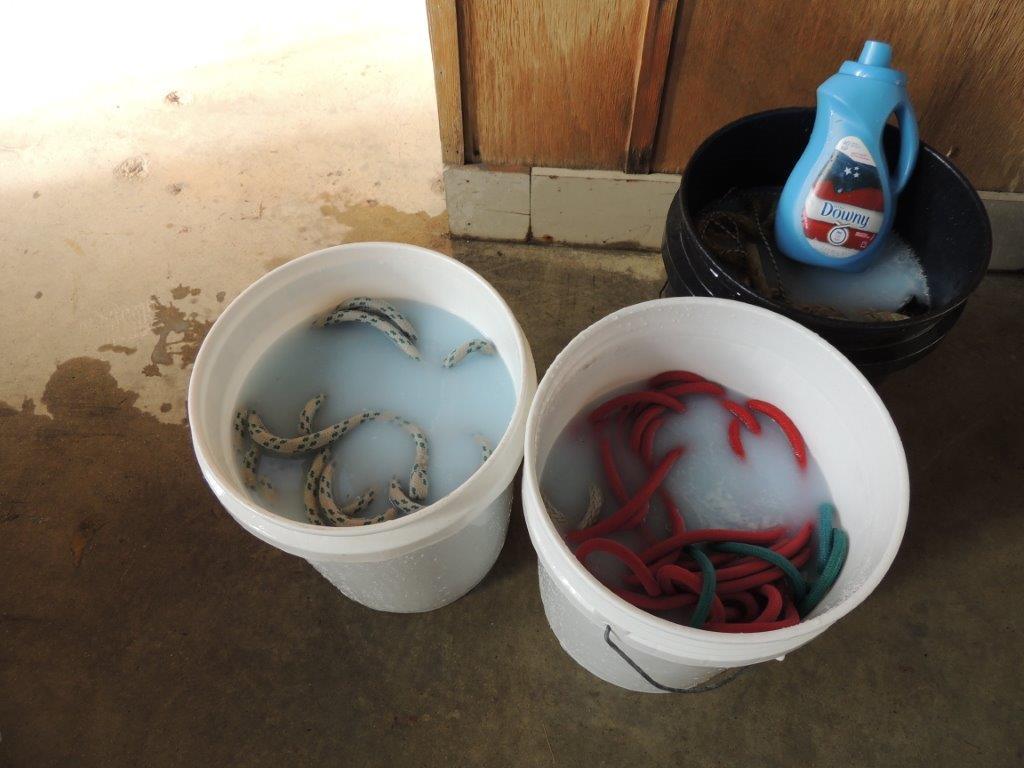
Going back to my line about being a thrifty New Englander: +/- the above is what your canvas/sail maker does when the treat your canvas or sails, obviously they aren’t dealing with your lines and fender covers but follow the above tips and you will find that your sails and canvas last longer and look better thereby keeping your boating costs down and your boat looking great!

